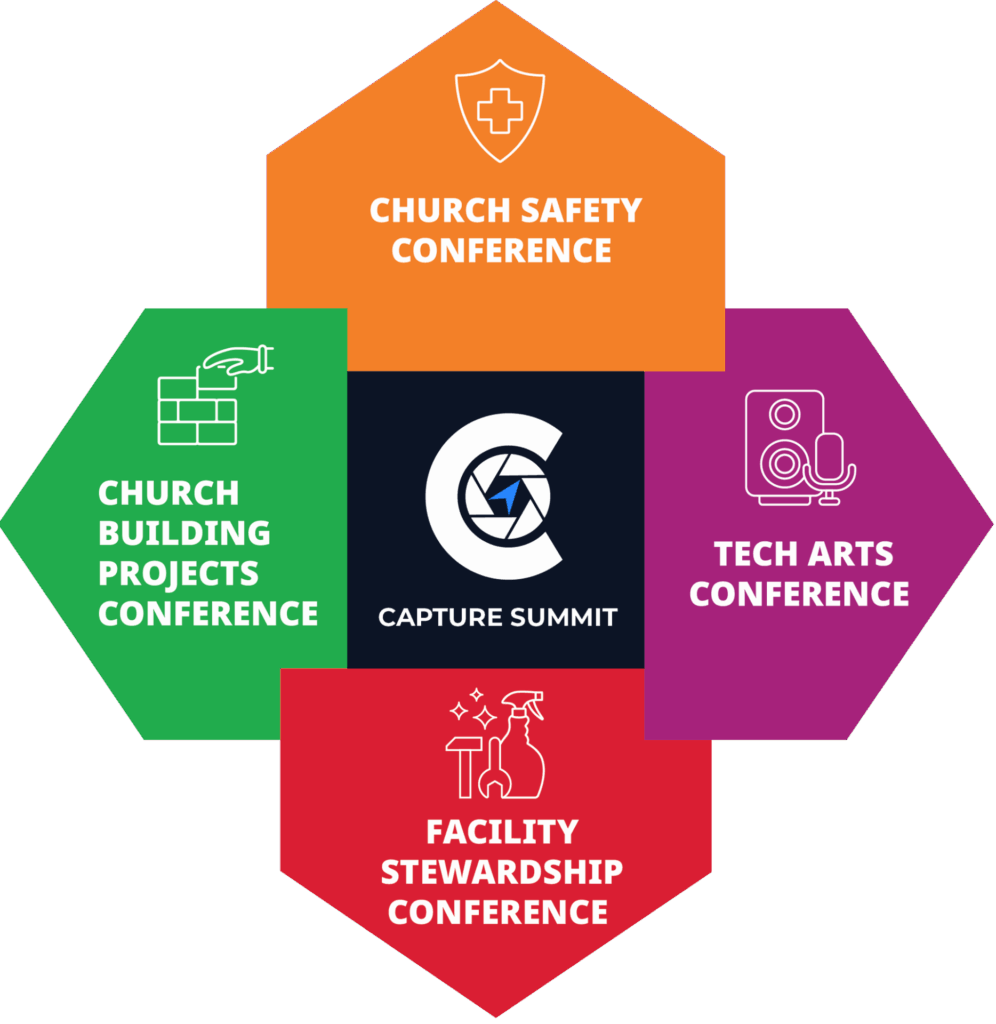– SPONSORED CONTENT –
Glass doors and windows are among the most vulnerable points of entry for any building. With attacks on houses of worship on the rise, the demand for security glazing is increasing. This article explores the physical security needs of churches and the requirements that threat mitigation products should meet for existing glazing. The focus is on a new generation of clear, retrofit security “overglaze” systems, which use heavy-gauge, architectural-grade polycarbonate and extruded framing designed to resist forced entry and ballistic attacks.
The Need for Window and Door Glass Protection
Glass windows and storefront doors are the building’s weakest link. With incidents of smash-and-grab crimes, forced entry, vandalism, riots, and active shooters on the rise, the need for glazing protection is growing.
This is especially true for existing buildings with traditional, non-laminated glass storefronts and entryways. When these older glazing systems were installed, they were not exposed to the heightened threat levels faced today. As a result, such buildings are highly vulnerable to forced entry and ballistic attacks.
Crime Statistics
Police response times vary based on the type of incident and location. Burglary, vandalism, and other non-life-threatening crimes are typically considered lower priority by law enforcement. National data show that only about 12% of police responses to property crimes occur within 5 minutes. Approximately 20% of calls receive a response within 6 to 10 minutes. However, nearly half—about 47%—wait between 11 minutes to an hour, with another 12% taking longer than an hour. During this extended response window, property can be damaged, and valuable equipment stolen—especially in facilities without proper physical protection.
Recent Trends in Attacks on Houses of Worship
Attacks on places of worship are increasingly common. In 2023 alone, there were 436 reported incidents targeting U.S. churches—more than double the number from 2022, representing an eightfold increase since 2018. These incidents included over 315 acts of vandalism, 75 arsons or arson attempts, and 10 reported gun-related events. Nearly 20% of all attacks were violent in nature, often involving firearms or explosives. christianpost.comwashingtonstand.com+2firstliberty.org+2christianpost.com+2
Window Protection Options
Given the wide range of security threats today, numerous retrofit solutions are available to protect building occupants and property. Protective glazing materials are typically not incorporated into new construction unless required by code. However, a threat assessment will help identify the value of a retrofit glazing system, allowing building owners and developers to enhance safety based on current risk levels. A comprehensive threat assessment and available budget may lead to the selection of more than one type of security glazing solution for a project.
Laminated Glass: Re-glazing Solutions
Removing and replacing the existing glass in doors, windows, and storefronts—known as re-glazing or “R & R”—is one option. Costs associated with this process include:
- Labor to remove existing glazing
- Transport and disposal (recycling may vary)
- Cost of new glazing
- Labor and materials for installation
Key considerations include the existing glass type, energy code requirements, visual matching, and threat resistance needs. Traditional laminated glass may slump under impact, creating vulnerabilities, and small or large missile-impact glazing may be required for complete protection.
Safety and Security Window Film
Window films offer benefits in solar control, privacy, energy efficiency, safety, and security. Safety/security films help control glass failure and delay unauthorized entry for up to 45 seconds. Available options include anti-smash-and-grab, active-shooter mitigation, blast-resistant, and RF-shielding films. They are surface-applied, clear or tinted, and maintain visual clarity. While effective for light attacks, films alone do not prevent glass evacuation during severe or repeated assaults.
Retrofit Security Glazing Systems – Also Known as “Overglaze” Systems
Retrofit security or “overglaze” polycarbonate systems attach to existing window frames, either inside or outside, creating an airspace between the primary glass and protective shield. Under attack, the system flexes to absorb and deflect energy, holding broken glass fragments in place and preventing forced entry.
These systems are engineered to:
- Keep attackers outside the building
- Provide forced-entry protection without replacing existing windows
- Protect occupants and property
- Safeguard parishioners, students, and employees from active-shooter threats
- Buy time for first responders, administrators, and security personnel to act
Benefits Beyond Security: Energy Efficiency, Acoustics, and Sustainability
In addition to security benefits, retrofit overglaze systems function as secondary glazing. By adding a clear layer of polycarbonate over existing windows, these systems create an insulating air space that supports significant energy savings.
- Up to 20% reduction in heating and cooling energy use compared to window replacement scenarios.
- Nationwide studies show that upgrading commercial windows—including the use of secondary glazing—can reduce overall site energy consumption by 4–6% in typical buildings, and up to 26% in high-energy-use facilities
These energy savings translate directly into lower utility costs and improved occupant comfort. A tight air gap also helps reduce thermal drafts and external noise, enhancing the worship experience.
Secondary glazing also enhances acoustic performance, reducing external noise by up to 40%, which supports a calmer worship environment. Condensation issues are minimized by proper venting, enhancing system longevity.
Environmentally, overglaze retrofit systems align with adaptive-reuse best practices, preserving existing materials, minimizing waste, and maintaining architectural integrity—critical for historic worship facilities. Their subtle interior or exterior mounting preserves the aesthetic character of traditional buildings.
Ballistic Security Systems
Due to growing social unrest and attacks on houses of worship, ballistic-grade security has become essential for many institutions. Ballistic retrofit glazing systems incorporate multiple layers—glass, interlayers, and plastics like polycarbonate—to deform, secure, and absorb projectile energy.
Only ballistic-rated systems are engineered to stop bullets, while standard retrofit systems provide delay against forced entry. These solutions offer advanced protection in worst-case scenarios.
Ballistic-Grade Glazing
Ballistic glazing typically comprises layered combinations of glass, interlayers, and polycarbonate or acrylic. The glass layers deform and reduce projectile velocity, plastic layers hold bullets, and interlayers maintain structural integrity.
Types include all-glass laminates, glass-clad polycarbonate laminates, laminated polycarbonates, and solid acrylic. Protection levels depend on thickness and configuration. Only some retrofit security systems carry proven bullet-stopping capability.
Conclusion
Security glazing, particularly retrofit overglaze systems, offers a powerful defense for houses of worship. Beyond protecting against forced entry and ballistic threats—even active shooters—these systems enhance energy performance, acoustics, resilience, and sustainability, all while preserving architectural integrity. With vandalism and violent attacks on the rise, and with law enforcement response often delayed, the time to invest in protection is before it becomes necessary.


